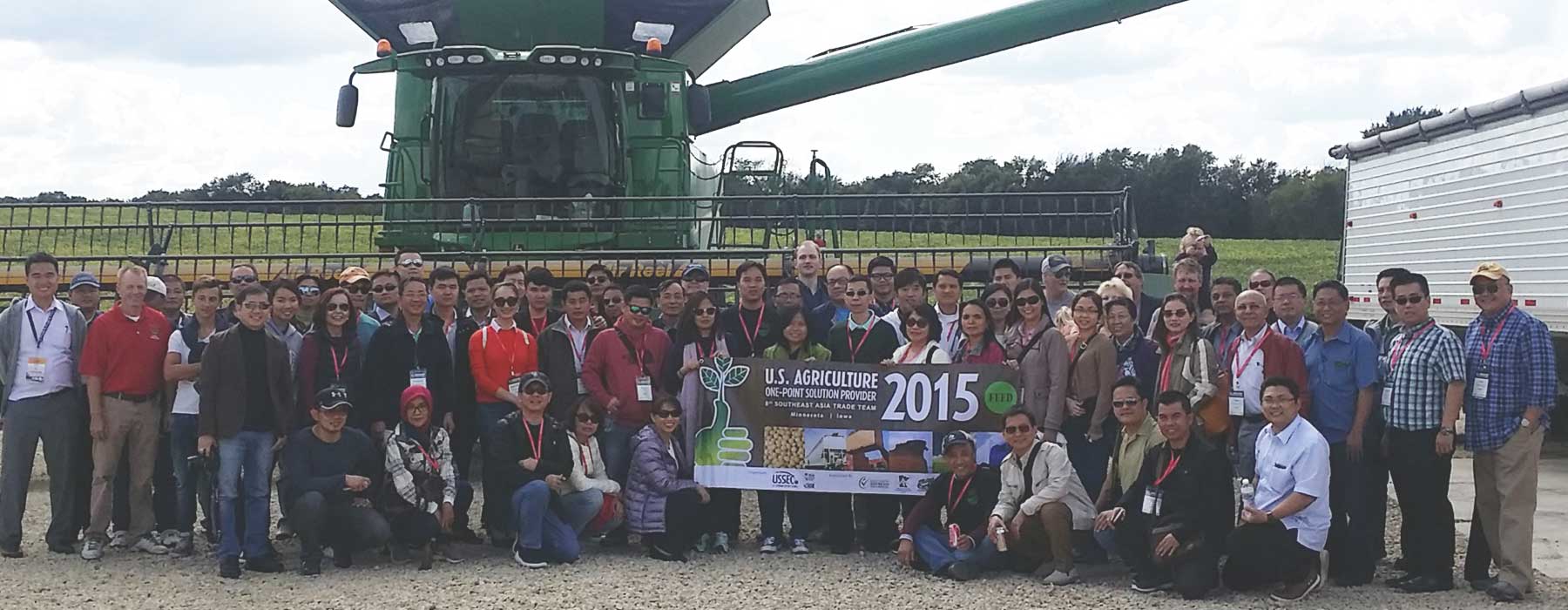USSEC Hosts 8th Southeast Asia Trade Mission to the U.S.
- Category:
- Event followup




USSEC hosted the 8th Southeast Asia (SEA) trade mission to the U.S. in September. Two teams, feed and food, participated in this mission. The teams were comprised of senior executives, owners and directors from trading, crushing, feed milling, livestock raising, and food processing companies and associations. All are existing or potential significant purchasers of U.S. Soy. The timing of the trade mission is strategic because it is organized around the start of the soybean harvest season when U.S. Soy is most competitive. The teams attended the U.S. Soy Global Trade Exchange in Minneapolis from September 9 – 11, met with suppliers, and visited farms, seed technology companies, co-ops and soy extrusion technology facilities.
The feed team, consisting of 54 representatives from 45 companies, visited Minnesota and Iowa from September 7 – 16. Attendees hailed from Cambodia, Indonesia, Malaysia, Myanmar, Philippines, Singapore, Thailand and Vietnam. In addition to attending the U.S. Soy Global Trade Exchange, the group also met and visited with the Scoular Company,
Keith Schrader Farms,
FCStone,
Farmers Cooperative Company (Perry Co-op), International Feed, Insta Pro International, Dupont Pioneer and Garrett Farms.
The SEA feed team visited Minnesota and Wisconsin between September 7 and 13. The team was made up of 11 representatives from 9 companies, coming from Indonesia, Philippines, Singapore, Thailand, and Vietnam. They visited AB Farms,
CHS Oil Processing,
Grain Millers Specialty Products, Ag Identity Processing and Knewston Soy Products, in addition to attending the U.S. Soy Global Trade Exchange.
Fitri Nursanti Poernomo, an Indonesian journalist covering the trade mission, stated, “This visit has opened our minds about the superiority of the U.S. in producing soybeans for the world where high technology is used optimally. Environmental sustainability, quality and supply chain guaranteed.”
The teams’ combined estimated annual import volume is 3.5 million metric tons (MMT) in commodity grade soybeans, 15,000 to 20,000 metric tons (MT) in food grade soybeans and 5.0 MMT of soybean meal.
Business discussed and/or concluded includes 80,000 MT of commodity grade soybeans, 5,000 MT of food grade soybeans and 100,000 MT of soybean meal.
Based on participant feedback, this trade mission presented valuable networking opportunities with potential U.S. suppliers and fellow participants. Most attendees commented that they benefitted from the educational materials and knowledge shared on the U.S. agriculture supply chain during the conference, visits and meetings.
USSEC SEA’s Kim Soong said, “As a new member of the USSEC family, it is an eye opener to witness the concerted efforts of all the organizations in the U.S. agricultural supply chain in ensuring that the products received by customers at the destinations are in tip top condition, if not of the best quality. I would also like to thank our hosts for their hospitality extended to the Southeast Asia Trade Team during this visit.”